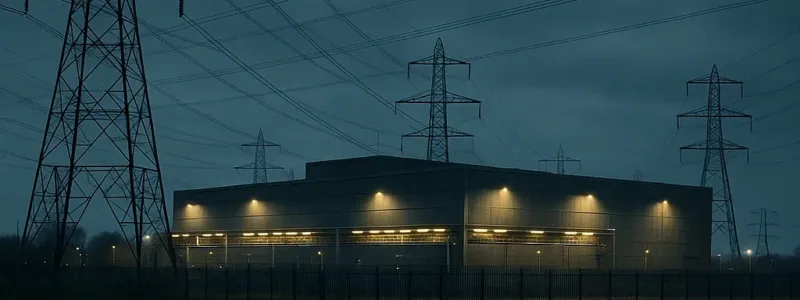7 minute read
There are encouraging signs that a re-energised and revitalised Scottish Cluster is getting ready to deliver on its huge but so far unfulfilled promise.
Excitement around the original Scottish Cluster project stemmed from projections that it could contribute £17.7 billion to the UK economy by 2050 while playing a major role in reaching the nation’s Net Zero targets. That promise remains as hope emerges that the country is set to overcome previous uncertainty, lack of commitment, and perceived regional bias against Scotland.
Can the cluster pass muster?
A fully integrated Scottish Decarbonisation Cluster can now deliver on the ambitious strategy to achieve net-zero emissions by 2045 through large-scale CO₂ reduction.
Vital lessons have been learned and crucially, a new ‘whole system’ approach is emerging with Grangemouth at its centre. It includes every single one of Scotland’s energy intensive industries. The rallying cry now is ‘decarbonisation without deindustrialisation’.
Essentially, Scotland has two potential routes to reaching Net Zero. It can decarbonise its domestic industries, maintaining production and safeguarding the workforce as part of a just transition; or it could shut down Scottish industry in favour of sourcing production from abroad, regardless of the emissions generated from those imports in the country of origin. Clearly, the former option is far better for Scotland for the sustainability of Scotland’s economic future.
The publication of Project Willow by the Scottish Government fires the starting gun on an ambitious plan to transform the entire Scottish Cluster. It sets out a vision for a low-carbon future for the massive Grangemouth refinery complex on the River Forth, based on nine technologies ranging from hydrogen production and sustainable aviation fuel to plastics recycling.
According to consultants EY, the project would require £3.5 billion of private investment with some of the technologies not being ready for several years. However, many of the projects could be accelerated and implemented quickly.
Grangemouth is already Scotland’s biggest industrial complex accounting for 8% of the country’s manufacturing base. In its new role, it will be a centre for industrial emissions capture and a vital carbon neutral hub for the wider Scottish economy. Carbon capture can achieve critical mass through Grangemouth-based industries before extending the connections to other industries throughout the central belt.
As mentioned, this will require a ‘whole system’ approach with stakeholders working together to solve problems and devise solutions, as opposed to remaining in their traditional silos. This will involve strategic dialogue and collaboration from the public sector, industry, the investment community and unions.
Climate of opportunity
There is strong support for decarbonisation without deindustrialisation. In her spending review in June of this year, the Chancellor, Rachel Reeves confirmed that she would provide development funding for the Acorn CCS project, based at the site of the St Fergus gas terminal in Aberdeenshire. Acorn, of course, is the keystone of the current Scottish Cluster plan. It plans to take CO2 and store it in depleted gas reservoirs under the North Sea.
But, if Scotland is to capitalise on this groundswell of support and make the most of its decarbonisation drive, centred on Grangemouth, it must learn from successes and failures elsewhere.
That will allow it to catch up with similar decarbonisation projects in England – such as the Humber Industrial Cluster – which have received substantial investment from the Labour government and have made significant progress.
In Europe, such schemes are well-advanced and could serve as excellent blueprints for a rebooted Scottish Cluster initiative. The Netherlands, for example, is a trailblazer and leader in decarbonisation through schemes such as the Port of Rotterdam’s Porthos scheme – which will store 2.5 billion tonnes of CO₂ annually from next year – and the Carbon Connect Delta on the River Scheldt.
Cluster 2.0 will succeed through coordinated policy decisions, equitable funding allocations, and a clear commitment to supporting Scotland's role in the UK's net-zero ambitions.
Shovel-ready and investor-friendly
As part of this reinvigorated approach companies are putting forward a stronger and more compelling business and technical case for the Cluster.
The ambitious Acorn project has successfully remade its business case about the readiness and commercial viability of its long-term infrastructure for transporting and storing CO₂.
It has received the go-ahead by providing the robust evidence that it can meet the technical, financial and policy requirements for a large-scale industrial decarbonisation.
CCS has a central and strategic role to play in the decarbonisation of Scotland’s industry. If it is to be deployed at the scale and the pace necessary to meet climate targets, then the following lessons must be adopted for Cluster 2.0:
Key objectives for the Scottish Cluster
Companies must:
- Create a compelling strategy and value proposition: Project Willow has identified core opportunities and costs, but companies must make it clear how exactly Scotland will integrate CCUS, hydrogen and offshore wind into a cohesive investment case.
- Seek to make the project as competitive and investable as possible: investor confidence will be greatly improved by giving investors much clearer ROI projections and offering tax breaks linked to CCS and hydrogen projects.
Investments into dedicated CO2 storage projects have been limited so far, mainly because they lacked a viable revenue model, with high upfront costs and uncertain future revenues. While this reality may be changing the perception remains and must be challenged.
It’s vital to make a convincing case for the scalability of long-term infrastructure to hard-headed investors who want to see robust returns.
Get communities onside from the outset: open communication and community involvement can turn sceptics into advocates. These communities, such as the people of Grangemouth who live around the Ineos and Petroineos site, have vested interests in the jobs and investment that could come to the area as the result of the Cluster, stimulating the growth of the local economy.
Boosting public awareness and engagement can alert communities that CCS is safe and effective, overcoming resistance and emphasising the economic benefits.
Government should focus on:
- Providing consistent and transparent policy commitments: Business leaders have told us that uncertainty over government support is a key factor in undermining investor confidence. Both the UK and the Scottish governments can mitigate this by giving a clear, unwavering commitment to specific industrial decarbonisation projects, such as the Scottish Cluster centred on Grangemouth, to boost investor confidence.
- Aligning industrial strategy with net-zero goals: it’s important for the government to stop looking at industrial policy in isolation from climate policy. The two go hand-in-hand, so aligning their goals and timelines is essential to maximise the effectiveness of funding and remove regulatory barriers. Decarbonisation initiatives like the Scottish Cluster require specialised funding and planning, which the current regional framework may not adequately prioritise.
- The importance of public-private coordination: Norway’s CCS funding model, the Longship project, gives an excellent blueprint for successful public-private investment schemes. The Norwegian government committed to €1.7 billion and provided policy certainty to attract private investment.
The world’s most successful decarbonisation clusters are all unique, but they share several key principles that integrate policy support, industry collaboration, infrastructure investment, and technological innovation. If it works, why not copy it?
What does Scotland get?
Scotland is currently raising its game on decarbonisation. The will is there to create a world-class decarbonisation hub at Grangemouth that learns from global best practices.
By developing solutions that fit the country’s distinctive circumstances and goals – and by exploiting advantages such as its North Sea storage capacity and industrial expertise – Scotland is well-placed to drive its net-zero economy.
The challenge is to create a compelling Cluster 2.0 strategy that excites investors and satisfies policymakers. Then commit to it for the long-term.






